Lumber Prices Are Volatile — SIPs Slash Costs and Risk
Lumber tariffs driving up costs? SIPs cut lumber use by up to 80%, lower labor needs, and deliver stronger, faster, more..
The building envelope assembly is a crucial sustainable building feature that can significantly reduce operating costs, increase a building's value, and have a positive ecological impact. In this article, learn why a well-designed and properly constructed building envelope is so crucial.
A building envelope is a physical boundary that separates the interior of a building from the external environment. It serves as a protective barrier that helps to regulate the flow of energy, air, and moisture between the interior and exterior spaces of a structure.
The building envelope is a critical component in ensuring the comfort, energy efficiency, and durability of a building.
Building envelope design, materials, and construction play a key role in determining the durability, energy efficiency, and sustainability of every structure. Learn why the type of building envelope you choose really matters.
Well-designed and properly constructed building envelope systems, which include elements like insulation, air sealing, and efficient windows and doors, play a pivotal role in maintaining a stable indoor temperature.
By preventing heat loss in the winter and heat gain in the summer, they reduce the building's reliance on heating and cooling systems. This directly translates into lower energy/fossil fuel consumption, reduced operating costs, and smaller HVAC systems, as less energy is needed to maintain comfortable indoor conditions.
This differs from buildings without a continuous insulation surround such as wood/stud site framed or steel stud assemblies. In these other types of non-SIP buildings, the studs cause a bridge in the building envelope for heat loss and heat gain to travel along, also known as thermal bridging.
Recognizing the importance of an airtight building envelope in energy efficiency, the 2021 International Energy Conservation Code (IECC) requires continuous insulation for compliance.
Buildings designed with offsite construction SIP (structural insulated panel) envelopes, with their solid core rigid insulation, comply with these new codes without the additional layer of continuous insulation — saving projects time and money!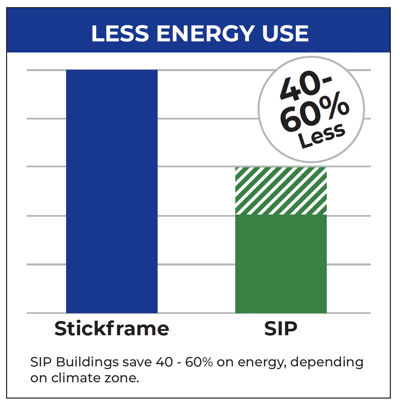
A high-quality building envelope not only conserves energy but also enhances indoor comfort. It minimizes drafts, reduces temperature fluctuations, and improves overall indoor air quality.
Properly designed building envelopes also reduce the risk of moisture intrusion and mold growth, promoting healthier indoor environments. These factors contribute to occupant satisfaction and productivity in commercial settings. Plus, with superior indoor environmental quality (IEQ), building owners can realize greater property values and rental rates.
Additionally, with more than half the population struggling with respiratory issues like asthma, Clean Air Certified structures are more important than ever. Officially Clean Air GOLD Certified, Premier SIPS’ structural assembly and select accessories achieve this stringent compliance.
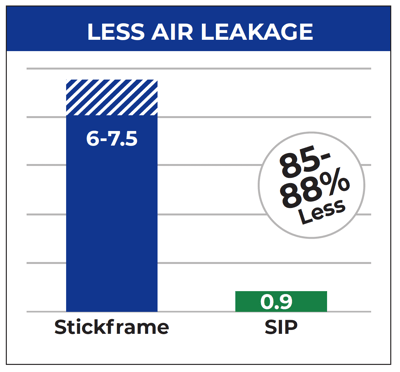
Sustainable building envelope materials and construction techniques are often chosen for their durability and resilience.
Bowed lumber and other imperfections of site-framed building envelopes are susceptible to weaker structural integrity. Choosing engineered materials offers strength and predictability, and many times this strength is warranted — such as in Premier SIPS.
This durability minimizes the costs and needs for builder callbacks, frequent repairs, and replacements, reducing maintenance costs over the building's lifespan. It also ensures that the building retains its value for a longer time.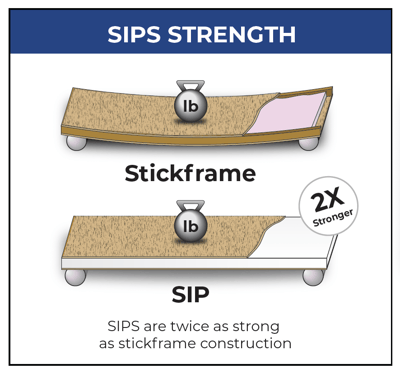
Well-designed building envelope solutions can protect against extreme weather events, such as hurricanes, floods, wildfires, and seismic activity. This resilience not only ensures the safety of occupants but also prevents costly damage to the building and its contents.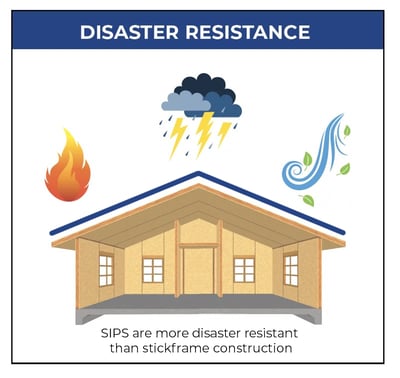
Buildings consume and emit more than 40% of energy globally — and even more in the U.S. — a higher impact than cars and trucks on the road. For this reason, the design of each built environment is key to reducing global warming.
Many building codes and energy standards, particularly the 2021 energy codes enforced by the International Code Council (ICC) in many regions, are working to combat this with smarter building requirements. These codes are enforced to ensure that building envelopes consume and emit less carbon, have reduced embodied carbon, and overall maintain a certain level of energy efficiency.
Meeting or exceeding these requirements can lead to financial incentives, tax credits, or rebates, further enhancing the importance and economic benefits of a sustainable building envelope.

Sustainable building practices, particularly those focused on a high-performance building envelope, are becoming more sought after by environmentally conscious buyers and tenants, emphasizing the need for energy efficiency and environmental responsibility. These practices not only enhance a property's market appeal but also potentially increase occupancy rates and boost property value.
For commercial and multi-family applications, the utilization of a sustainable building envelope, such as in SIP buildings seeking LEED certification, leads to improved indoor air quality, greater tenant satisfaction, and decreased turnover rates. Studies show that these high-performance buildings not only experience a 27% rise in occupant contentment and a 6% increase in occupancy rates but also command higher rent prices, with premiums of at least 2.1%.
Failure to incorporate high-performance building elements could mean missing out on significant potential investment revenue, particularly as buyers increasingly prioritize sustainable and energy-efficient features in their real estate purchases.
The market shift towards sustainability and energy efficiency is driven by heightened climate change awareness and the desire to reduce carbon footprints. Consequently, high-performing homes stand as attractive investments due to their immediate benefits of lower energy costs and reduced utility bills while contributing to a more sustainable and resilient community. This trend in real estate reflects a broader societal shift towards environmentally conscious living.
Sustainable building envelope materials, such as those made from recycled or rapidly renewable resources, have a lower ecological footprint.
A well-designed building envelope that incorporates sustainable materials and practices minimizes the demand for new resources and contributes to a 30%+ reduction of job site waste sent to the landfills. It also reduces the need for continuous repairs, maintenance, and energy consumption, contributing positively to the environment by conserving resources and minimizing waste.
Additionally, by reducing energy consumption, the building envelope contributes to lower greenhouse gas emissions, making it an eco-friendly choice.
SIPs building system assemblies are 100% recyclable with an impressive lifecycle impact and an extremely low embodied carbon footprint.
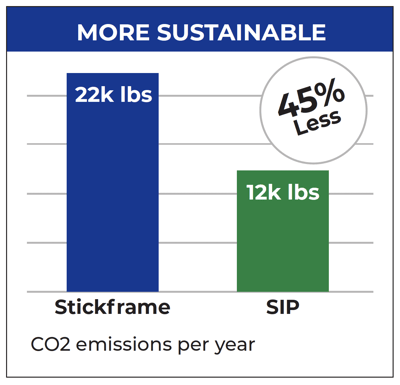
In summary, the building envelope assembly is a fundamental component of sustainable building design. It not only reduces operating costs and increases a building's value but also has a positive ecological impact by conserving energy and resources.
High-performance builders recognize the importance of investing in a sustainable building envelope as a foundational element in creating environmentally responsible and economically efficient buildings.
To learn more about SIPs high-performance building envelopes, reach out to a team member near you.
Lumber tariffs driving up costs? SIPs cut lumber use by up to 80%, lower labor needs, and deliver stronger, faster, more..
Learn what’s changing—and what’s not—with energy tax credits for SIP projects. Get the latest updates on 25D, 45L, 179D, and..
Plan smarter, build better. Discover how SIPs and sharp preconstruction planning help tackle today’s construction..
High-performance buildings start with better systems.
Premier SIPS deliver a building envelope that outperforms traditional framing in efficiency, strength, and long-term durability. If your project demands higher performance and greater predictability, let’s talk.